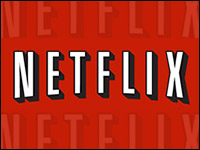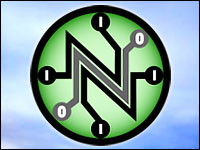
If the Internet is the equivalent of our solar system, then Netflix would be Jupiter, its largest planet. That, at least, is the imagery that Sandvine evokes in its latest report, “Global Internet Phenomena Spotlight.”
Netflix has ascended to the No. 1 Internet traffic spot, the firm found, accounting for 29.70 percent of all peak-period downstream traffic. That No. 1 statistic, by the way, is a blanket designation: The site is tops when measured over 24 hours and when measuring for both upstream and downstream traffic.
How is that possible? The average Netflix subscriber consumes more than a gigabyte of data per day, Sandvine said.
There are a number of reasons Netflix — which in the Fall of 2010 was the third-largest source of traffic — posted such rapid growth: It has introduced a “Streaming Only” service tier in the United States; announced a deal to air exclusive content, the television series “House of Cards”; begun offering streaming on Nintendo Wii and Sony PlayStation; and collaborated with Apple to integrate streaming Netflix in Apple TV.
The fundamental reason for its growth, though, is that “Internet subscribers are embracing different ways of accessing content by many different devices,” Lee Brooks, product marketing manager for Sandvine, told the E-Commerce Times.
Changing Times
This trend — long in the making but highlighted with surprising force in Netflix’s rise — is having a significant impact on all the players at this table.
Consumers are becoming more demanding of their ISPs to deliver quality performance. Content providers are realizing they must satisfy this channel as well. ISPs are realizing that they had better step up to the challenge.
The Royal Wedding
Broadcasts of the recent Royal Wedding were telling, from the content providers’ perspective, Brooks said.
“We saw a number of TV networks take a plunge into this space, providing online videos with additional coverage,” he noted.
“It wasn’t just the pure stream of events that you typically find on YouTube,” continued Brooks. “Consumers, for their part, wanted to go to the networks with which they were familiar to watch the wedding — but from the Internet.”
ISPs vs. Netflix’s Loyal Hordes
ISPs are likely less than thrilled with these changing trends. They are, after all, the ones that must carry the traffic. If Net neutrality is seriously undermined, there is a good chance they will start charging customers for the privilege of accessing such sites as Netflix.
Indeed, Comcast told Level 3 Communications last December that it would levy additional fees to deliver Netflix content to its subscribers.
It is a trend that will continue, Dan Geiger, vice president of marketing for BroadHop, told the E-Commerce Times. “ISPs and telecoms will try to force it to share revenue or to help with the bandwidth problem they are creating. This very likely could get regulators, such as the FCC, involved.”
Such squabbling, though, is bound to irk users who don’t know and don’t care about such policy nuances. They just want their on-demand content.
Netflix is a very “sticky” over-the-top service, Geiger said, and differs from such services as Facebook, Skype, WebEx voice and screen sharing, and Pandora, in that its customers are loyal users and willing to pay for content.
However, its “bandwidth use interferes with other services, degrades overall customer experience, and may require some additional network services,” concluded Geiger, “to guarantee that customers receive Netflix videos in a reliable way.”























































Social Media
See all Social Media